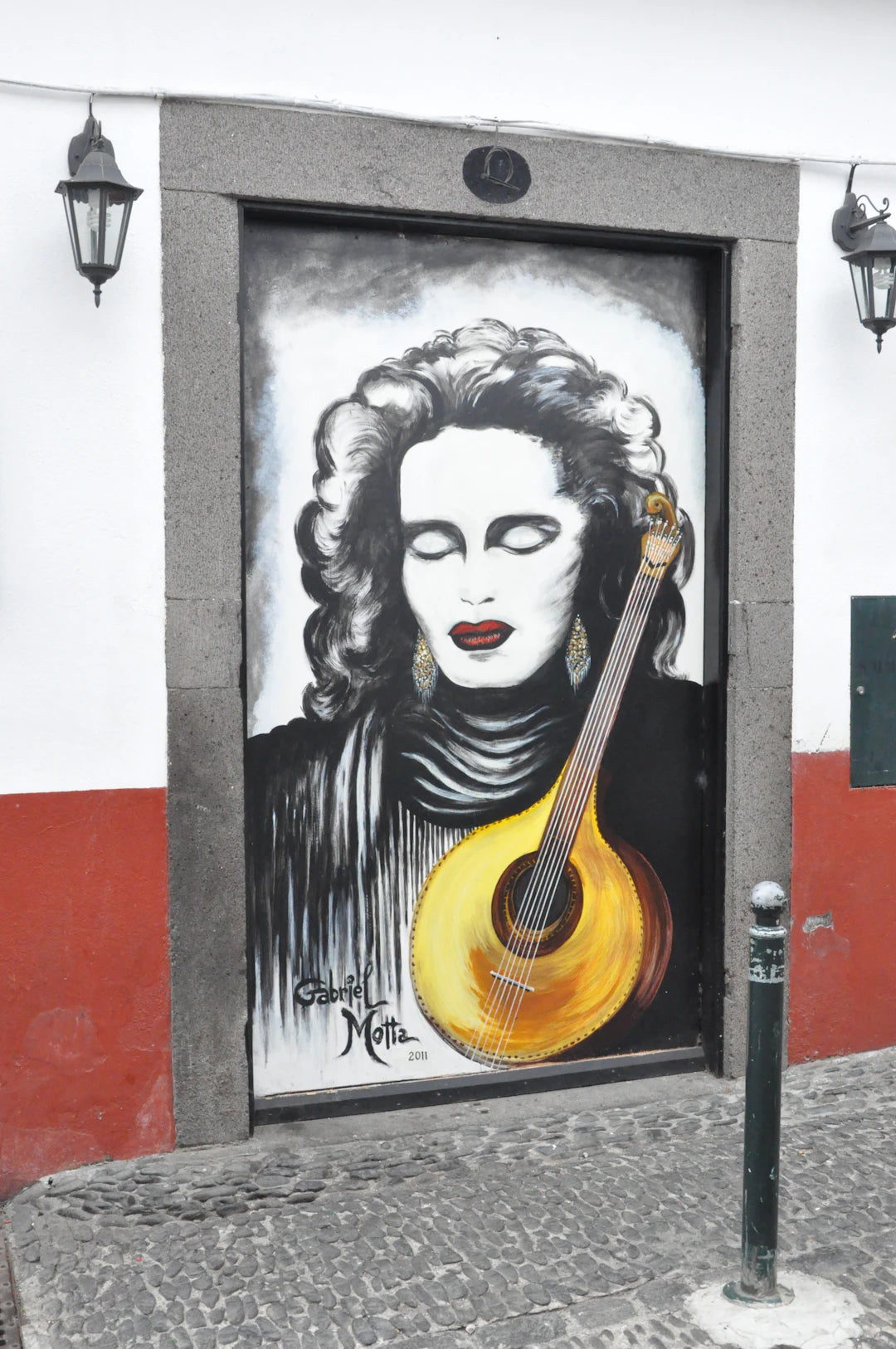Overview
Guitar painting is a creative way to personalize your instrument and express individuality. Explore popular art styles like Abstract, Realism, Pop Art, Graffiti, Nature, and Geometric Patterns. Choose a style that reflects your personality and musical genre, and gather essential tools like high-quality paint and brushes. Techniques like layering, airbrushing, and decals can enhance your artwork. Maintain your painted guitar by avoiding sunlight, cleaning regularly, and reapplying clear coat. Seek inspiration from nature, art galleries, social media, or local artists to ignite creativity. Transform your guitar into a unique masterpiece today!
Frequently Asked Questions
1. What is guitar painting?
2. What are some popular art styles for guitar painting?
3. What tools and materials are needed for guitar painting?
4. How can I maintain my painted guitar?
5. Where can I find inspiration for my guitar art?
Guitar painting is not only a way to enhance the aesthetics of your instrument; it’s also a form of self-expression that allows musicians to reflect their individuality. Whether you own an electric, acoustic, or bass guitar, exploring various art styles can open a world of possibilities for customization. In this article, we'll dive into different art styles for guitar painting, touching on techniques, inspirations, and essential tips, including how to achieve a perfect guitar clear coat finish.
The Importance of Art Styles in Guitar Painting
Just like music, art has various styles that evoke different emotions and attract different audiences. Choosing an art style for your guitar can enhance its visual appeal and create a deeper connection with your instrument. The right design can also inspire creativity when you play, making it worthwhile to explore the myriad styles available.
Popular Art Styles for Guitar Painting
Here are some of the most well-known art styles that you can consider for your guitar painting project:
1. Abstract Art
Abstract art focuses on colors, shapes, and textures instead of representational forms. Artists can use bold lines and vibrant pigments to create a striking and unique appearance on a guitar. This style appeals to those who wish for their instrument to make a bold statement without adhering to a specific theme.
2. Realism
For those who prefer a more lifelike representation, realism is a fantastic option. This art style captures images and subjects as they appear in real life, featuring incredible detail. Common subjects for realism include portraits, landscapes, and even intricate designs, which can be successfully transferred onto a guitar's surface.
3. Pop Art
Taking cues from consumer culture and mass media, pop art is characterized by bright colors, bold graphics, and a sense of fun. Artists often incorporate icons from popular culture into their work, making it a great choice for musicians who want to showcase their love for music, film, or cartoon characters through their instruments.
4. Graffiti and Street Art
Graffiti and street art are synonymous with urban culture. This art style features dynamic designs, bright colors, and often incorporates typography. Applying graffiti techniques to a guitar gives it an edgy look and adds a personal touch that resonates with rebellious spirits and music festival vibes.
5. Nature and Floral Designs
Nature-themed art speaks to many people, creating a serene and organic vibe. Flower designs, landscapes, or even animal motifs can add a delicate touch and appeal to those who love the great outdoors. These designs may be painted artistically or can utilize stencils for precision and uniformity.
6. Geometric Patterns
If you appreciate symmetry and clean lines, geometric patterns could be the way to go. This style uses shapes such as triangles, squares, and circles to create visually appealing designs. They can be minimalistic or intricate, allowing for a tailored look that can fit any aesthetic.
Choosing Your Art Style
With so many styles available, how do you choose the right one for your guitar? Here are some factors to consider:
- Your Personality: Any art style you choose should reflect who you are. Think about what speaks to you and translates your personality onto the guitar.
- Musical Genre: Different genres of music often have their own aesthetics. For example, vibrant graffiti might suit a rock musician, while a floral design could appeal to a folk artist.
- Technical Ability: Some styles may require advanced painting skills. Make an assessment of your proficiency, and determine whether you’d prefer to attempt a style yourself or collaborate with a professional artist.
Essential Tools and Materials for Guitar Painting
Once you've chosen your art style, it’s crucial to have the right tools and materials to achieve the best results. Here’s a quick list:
- Paint: Choose high-quality paint suitable for wood surfaces. Acrylic paints are popular because they dry quickly and are easy to work with.
- Brushes: Depending on your chosen style, a variety of brushes (flat, round, fine-tipped) can help you achieve different effects.
- Stencils: If you prefer precision, stencils can help create clean and sharp designs, especially for geometric patterns.
- Sandpaper: Before painting, it's essential to prepare the guitar's surface properly. Sanding smooths out the instrument, helping the paint adhere better.
- Guitar Clear Coat: After applying your artwork, a clear coat is necessary for protection against scratches and fading. Look for a high-quality guitar clear coat that enhances your design while preserving its vibrancy.
Techniques for Applying Art on Your Guitar
Now that you have your tools ready, here are some techniques to keep in mind while painting:
Layering
It’s often beneficial to apply your paint in layers. Start with a base color and wait for it to dry before adding additional layers or details. This technique can add depth and richness to your designs.
Airbrushing
If you're looking to achieve a smooth gradient or intricate designs that are hard to replicate with brushes, airbrushing may be the answer. It allows for a level of detail that can bring your guitar's art to life.
Decal Application
Decals are a quick and clean way to apply designs, especially if you’re less confident in your painting skills. You can buy ready-made decals or create custom ones that resonate with your style.
Maintaining Your Painted Guitar
After your guitar painting masterpiece is complete, it’s vital to maintain it properly to ensure its longevity. Here are some tips:
- Avoid Direct Sunlight: Prolonged exposure to sunlight can cause your paint to fade over time. Store your guitar in a protective case when not in use.
- Regular Cleaning: Use a soft, damp cloth to wipe down your guitar and remove any dust or fingerprints. Avoid harsh solvents that could damage your paint.
- Reapply Clear Coat: Over time, the protective clear coat may wear off. Consider reapplying a guitar clear coat every few years to keep your artwork looking fresh and vibrant.
Inspiring Your Creativity
If you find yourself stuck on ideas for your guitar art, seek inspiration from various sources:
- Nature: Take a walk or hike and observe the colors and patterns around you. Let nature inspire your next design.
- Art Galleries: Visiting an art gallery can ignite a spark of creativity. Observe the different styles and see what resonates with you.
- Social Media: Platforms like Instagram and Pinterest are filled with creative guitar art examples to inspire your project.
- Collaborate: Don’t hesitate to reach out to local artists for collaborative projects. Different perspectives can open up new pathways in your design journey.
Take Action: Transform Your Guitar Today!
Exploring the world of art styles for guitar painting offers an incredible avenue for personal expression and creativity. By choosing the style that resonates most with you and following the tips outlined in this article, you can create a stunning piece that acts as an extension of yourself. From vibrant abstract art to detailed realism and everything in between, the transformation of your guitar is just a brushstroke away. So gather your materials, let your imagination explore, and unleash your inner artist on your instrument.
Linked Product

Odyssey Solstice Tele Neck SC
The Odyssey Solstice Tele Neck SC is designed to enhance your guitar's tonal range, offering a warm low end and bright high frequencies that are ideal for various music styles. With its hand-wound construction and quality materials, this pickup provides the classic Telecaster sound while maintaining modern reliability. It is suitable for musicians looking to achieve rich country, blues, or Americana tones in their playing.
View Product










